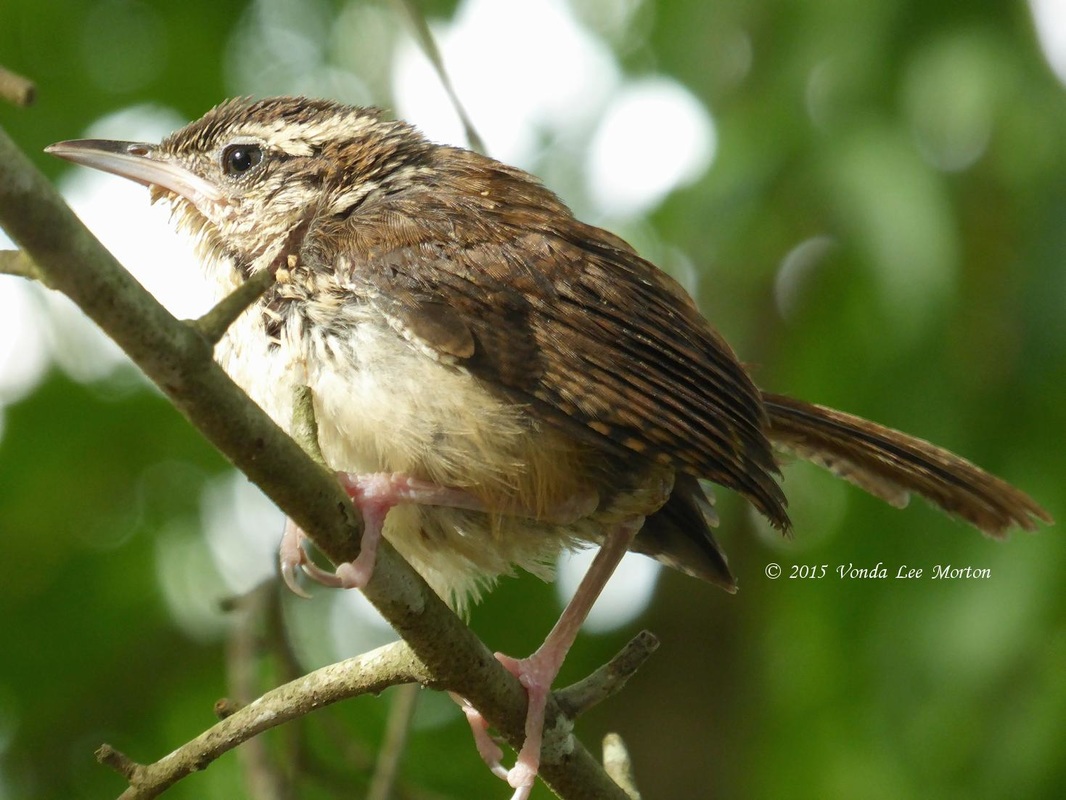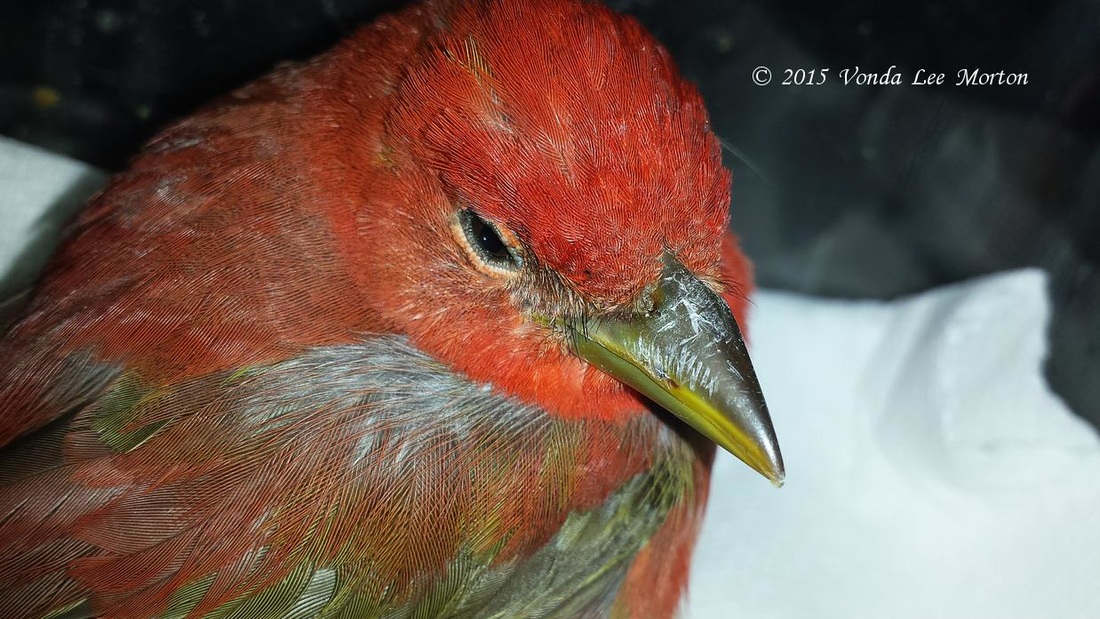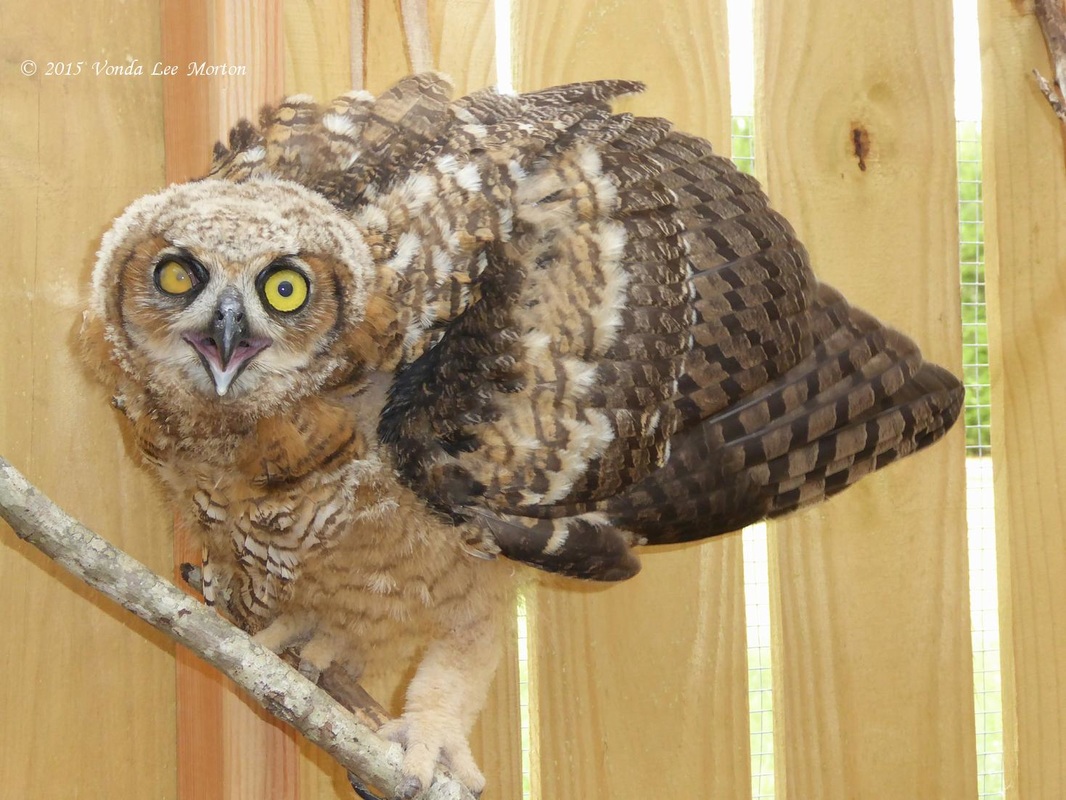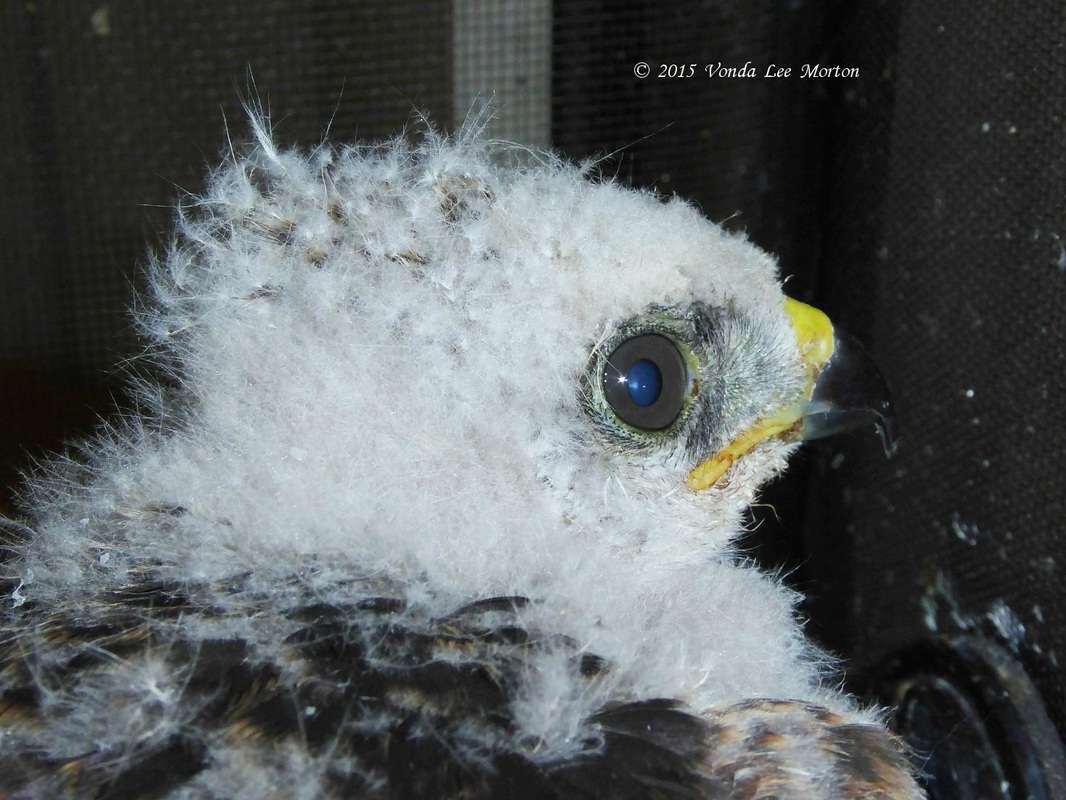Let’s begin with releases: the songbird flight was emptied of one set of fledglings, with more waiting in the wings (no pun intended). All the mockers who were in the flight, all the Carolina wrens, the house finch and the killdeer have been released!
|
The busiest months for rehabbers vary by region. For me, May and June are heavy months. A colleague in Virginia reports that June and July are her heavy months. But it’s a pretty accurate assessment that May-August is an insane period for bird rehabbers! Let’s begin with releases: the songbird flight was emptied of one set of fledglings, with more waiting in the wings (no pun intended). All the mockers who were in the flight, all the Carolina wrens, the house finch and the killdeer have been released! The poor cat-attacked mourning dove from last month still hasn’t grown back feathers, but since doves are mostly ground birds and the flight is a safe environment, I took pity on the stir-crazy bird and put him in the flight anyway. He seems much happier and less restless now. The Eastern phoebe and the blue jay “odd couple” are also in the flight now and still pretty much hanging together. There were, of course, the expected DOAs: another fledgling blue jay, a fledgling mocker and this gorgeous male summer tanager. Given the wound under his left eye and his head tic, I figured he’d whacked a window good and hard and would be fine the next morning, or within a day or two, at most. There were no other injuries and he seemed fairly alert and just a little “concussy.” Apparently there were other factors at play, however, as he died overnight. Two nestling mockers were found in the road with no nest in sight. This isn’t unusual for mockers, who will fall from the nest and—even before they can really walk well—wobble off. These rowdy rascals will be in the flight pen within the next week. This house finch won’t be too far behind them. His nest was found on the ground, with dead sibs who had been ejected in the fall. The great horned owl is flying like a pro and has decided to eat like a “good boy”, so as soon as I see him take out live prey, he’s releasable. And this downy little beauty, based on weight, should be a Mississippi kite. In fact, because I’m notorious for confusing M. kites and red shouldered hawks at this age, I consulted a colleague, who agreed weight would be consistent with M. kites but appearance was inconclusive. He was frightened, hungry and disoriented when he came in, so I had no vocalization to go on. Today he’s full, still unsure of this odd creature feeding him, but very vocal. It’s a red shoulder, and a teeninsy one, at that.
2 Comments
Ann Feldman
6/1/2015 12:06:30 pm
So cute all the little songbirds! Since owls hunt a lot by ear, will it matter much that the eye is damaged. Love the little Red Shoulder, poor little tyke. Don't forget to read "Hurt Hawks" the poem by Robinson Jeffers in the Bedside bird book. It will touch your heart. Then read the little piece before it, which will make you smile wickedly I'm sure. Oh...and Hellgate had a horrible hail storm last evening and it broke one of the eggs. Another may have a crack as well...we are hoping for at least one hatchling. What a shame after all the birds' hard work.
Reply
Laurens Wildlife Rescue
6/1/2015 01:16:14 pm
Hey Ann! No, the damaged eye won't really affect hunting since, as you say, owls hunt more by hearing. If it were a diurnal raptor, we'd have a different tale.
Reply
Your comment will be posted after it is approved.
Leave a Reply. |
Archives
April 2023
Categories
All
|


















 RSS Feed
RSS Feed
